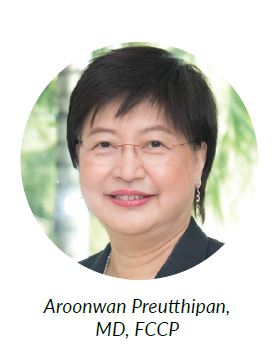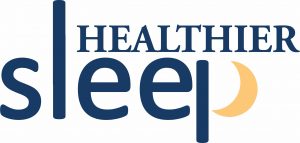Understand the rates, risks and treatments for your little one.
All around the world, parents worry about their children’s health. And while there is plenty of talk around how much sleep children should get, there is not always talk about what quality of sleep children should get. Aroonwan Preutthipan, MD, FCCP of Thailand has been working in the field of pediatric sleep medicine since 1992. She offers advice and insight into pediatric obstructive sleep apnea (OSA).
SYMPTOMS & RISKS
Risk factors for children and OSA differ from adults. In children, some of the risks include enlarged tonsils and/or adenoids, allergies or sinusitis and—the same as in adults—obesity. “Internationally,” Dr. Preutthipan begins, “the prevalence of OSA in children is reported at 2-5%. Primary snoring with no obstruction, is reported at 10-15%. This is much lower than the prevalence for adults, but parents should be aware of the symptoms.” The youngest child Dr. Preutthipan has ever diagnosed with OSA was less than one year old. She defines pediatric as younger than 18-years-old.

RISK FACTORS FOR OSA IN CHILDREN
• Enlarged tonsils and/or adenoids
• Allergies or sinusitis
• Congenital abnormalities
• Obesity
• Craniofacial narrow airways
• Hypothyroidism
In Dr. Preutthipan’s experience, snoring is usually the first symptom noticed by parents. “Some parents come to me and explain they’ve noticed the child’s snoring leads to gasping or pauses in breathing. Others tell me about changes in behavior.” By definition, OSA means to stop or pause breathing. If you notice your child’s breathing is abnormal, consulting a physician is advised.
For children, sleep deprivation often presents differently from adults. When an adult lacks sleep, physical fatigue and excessive daytime sleepiness are often reported. In children, Dr. Preutthipan explains how symptoms do not look the same. “When parents tell me their child has been naughty or hyper or attention-seeking, I know those are symptoms of
lack of quality sleep. I want more people to be aware that children do not always act sleepy when they are tired. There can be differences in emotions, learning difficulties and loss of concentration.”
SIGNS OF SLEEP DEPRIVATION IN CHILDREN
• Hyperactivity
• Attention-seeking or “naughty” behavior
• Changes in emotions
• Learning difficulties
• Lack or loss of concentration
WHEN SHOULD PARENTS CONSULT A PHYSICIAN
“Snoring is a danger sign,” Dr. Preutthipan explains. “Some studies show snoring without obstruction may have negative consequences to development. Report to the doctor at your routine wellness check any snoring sounds you may have noticed. If significant—meaning you have observed your child snoring three nights per week—we call it habitual snoring. Our guidelines recommend action be taken if habitualsnoring is present.” Dr. Preutthipan also recommends asking questions about OSA at your child’s visit.
DIAGNOSES & TREATMENT
So how does a child get officially diagnosed with OSA? The gold standard, as Dr. Preutthipan states, is a sleep study. But that’s not always an option. “Polysomnography, or a sleep study, is recommended, but patients have told me they believe they are too complicated or expensive. So before setting one up, I ask them: How well does your child sleep? Have you observed labored breathing? Does your child gasp for air while asleep? Have you seen their chest indrawing? Have you noticed daytime symptoms? A primary care physician can look for complications of OSA symptoms.” When asked if she recommends using any sleep trackers or apps to record a child’s sleep habits, Dr. Preutthipan suggested video recording a night’s sleep instead. When treating a child with OSA, special considerations need to be taken. For example, while CPAP masks may be the first line of treatment for adults, that may be a difficult-to-enforce option for young children. Dr. Preutthipan often prescribes the drug with the generic name montelukast (brand name Singulair) and also intranasal corticosteroids (such as Nasonex, Avamys) as both of them make breathing easier by reducing swelling and/or inflammation of the upper airways. When that doesn’t have an affect on OSA symptoms, Dr. Preutthipan explains that in Thailand, the next course of treatment is surgery. “There is a classic study of OSA in children from The New England Journal of Medicine that found administering a tonsillectomy and adenoidectomy (T&A) cured OSA 79% of the time conducted by Professor Carole Marcus, my dear mentor. For our ENT surgeons, this is a routine and low-risk surgery. I believe in the US, it is an out-patient procedure.” But if enlarged tonsils or adenoids aren’t the cause of the OSA and the child cannot tolerate CPAP, Dr. Preutthipan suggests looking into orthodontic devices. “A narrow palate can cause OSA so another line of treatment is to visit an orthodontist. Orthodontic devices are available to widen and enlarge the palate. One is called rapid maxillary expansion. And there are myofunctional therapy exercises that can relieve symptoms. All of these options should be considered with the patient.”
WARNINGS FOR LEAVING UNTREATED
In serious cases of OSA, leaving the symptoms untreated can have dire consequences. “Unfortunately, the list of consequences of leaving OSA untreated is long. There could be growth failure, hypertension, behavior and learning problems, aggressiveness or increased pressure in the lungs. I think if parents knew the association between OSA and any of these things, they would be more careful is looking for obstructions. My hope is that parents realize this is much more than a snore.”




2 Responses
I read this issue with great interest.
Pediatric obstructive sleep apnea, accompanied by intermittent hypoxia, is a very interesting theme on which our team has been working several years. We published articles below:
1) Kuma Y, Usumi-Fujita R, Hosomichi J, Oishi S, Maeda H, Nagai H, Shimizu Y, Kaneko S, Shitano C, Suzuki JI, Yoshida KI, Ono T. Impairment of nasal airway under intermittent hypoxia during growth period in rats. Arch Oral Biol. 2014;59:1139-1145.
2) Oishi S, Shimizu Y, Hosomichi J, Kuma Y, Nagai H, Maeda H, Usumi-Fujita R, Kaneko S, Shitano C, Suzuki J, Yoshida K, Ono T. Intermittent hypoxia induces disturbances in craniofacial growth and defects in craniofacial morphology. Arch Oral Biol. 2016;61:115-124.
3) Oishi S, Shimizu Y, Hosomichi J, Kuma Y, Maeda H, Nagai H, Usumi-Fujita R, Kaneko S, Shibutani N, Suzuki J, Yoshida K, Ono T. Intermittent hypoxia influences on microstructure of alveolar bone proper with hypoxia inducible factors from periodontal ligament cells in growing rats. Front Physiol. 2016;7:416.
4) Hosomichi J, Kuma Y, Oishi S, Nagai H, Maeda H, Usumi-Fujita R, Shimizu Y, Kaneko S, Shitano C, Suzuki J, Yoshida K, Ono T. Intermittent hypoxia causes mandibular growth retardation and macroglossia in growing rats. Am J Orthod Dentofacial Orthop. 2017;151:363-371.
5) Hong H, Hosomichi J, Maeda H, Lekvijittada K, Oishi S, Ishida Y, Usumi-Fujita R, Kaneko S, Suzuki J, Yoshida K, Ono T. Intermittent hypoxia retards mandibular growth and alters RANKL expression in adolescent and juvenile rats. Eur J Orthod [in press]
doi: 10.1093/ejo/cjaa020.
6) Kuma Y, Hosomichi J, Maeda H, Oishi S, Usumi-Fujita R, Shimizu Y, Kaneko S, Suzuki J, Yoshida K, Ono T. Intermittent hypoxia induces turbinate mucosal hypertrophy via upregulation of gene expression related to inflammation and EMT in rats. Sleep Breath [in press] doi: 10.1007/s11325-020-02162-6.
Moreover, in the neonatal animal model of intermittent hypoxia, we recently found that it causes a marked growth retardation of the mandible:
7) Lekvijittada K, Hosomichi J, Maeda H, Hong H, Changsiripun C, Kuma Y, Oishi S, Suzuki J, Yoshida K, Ono T. Intermittent hypoxia inhibits mandibular cartilage growth with reduced TGF-β and SOX9 expressions in neonatal rats. Sci Rep [in press]
If you carefully look at the findings of the reference #6 and #7, the hypertrophic nasal turbinate mucosa and small mandible would exacerbate obstructive sleep apnea during growth period.
I hope more pediatric professionals, co-medicals, and even parents become aware of the significant impacts of sleep respiratory disorders, and take the immediate action for lifelong quality of life of babies and children.
I would like to thank Prof. Takashi Ono for your useful information. As you have reported, OSA and craniofacial structure can disturb each other bidirectionally. Orthodontists as well as myofunctional therapy will play a crucial role for treatment of OSA in children. We definitely need more dental sleep specialists.